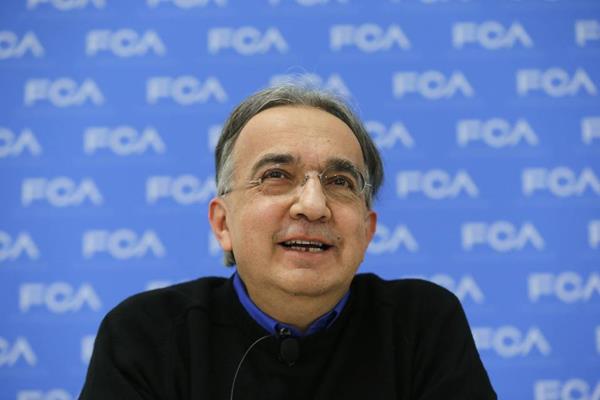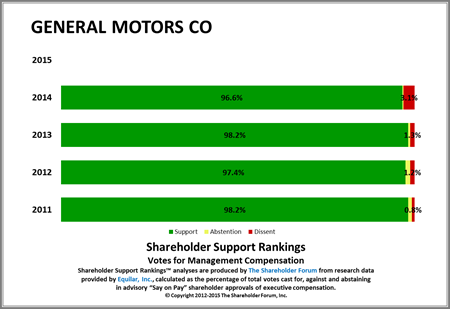|
THE
WALL STREET JOURNAL.
Business
Chrysler Boss Recruits Activists to Prod GM Into a Merger
Sergio Marchionne believes hedge funds can sway rival’s board to
accept his entreaties
|

Sergio Marchionne, chief executive of Fiat Chrysler, believes GM
and its investors would be better off using the Detroit car
maker’s liquidity to acquire his company than buying back its
shares. PHOTO: PAUL SANCYA/ASSOCIATED PRESS |
By
Eric Sylvers and
John D. Stoll
June 8, 2015 7:42 p.m. ET
Fiat Chrysler Automobiles
NV Chief Executive
Sergio Marchionne is reaching out
to hedge funds and other potential allies to prod
General Motors Co. into a merger,
according to people familiar with the matter.
His pursuit of outside
investors is only the latest move in Mr. Marchionne’s drive to find a
partner for the Italian-American auto maker, which logged $108 billion
in sales in its most recent fiscal year. But contacts with activist
investors—only months after GM agreed to hedge fund demands to buy
back billions of dollars in stock—have yet to land a patron, these
people said. A similar strategy could be employed with at least one
European auto maker, they added.
His high-profile calls for
industry consolidation have led some analysts to characterize Mr.
Marchionne’s pitch as a desperate one, reflecting Fiat Chrysler’s weak
operating margins. Although the company is now profitable, a potential
industry downturn and the future costs of meeting emissions
regulations and investing in new technology leave sizable risks.
Mr. Marchionne has been
emboldened by the recent success of activists at GM, the people said,
and views them as a means to force consolidation on the fragmented
auto industry. The 62-year-old executive has argued for months that
excess production, especially in Europe, and duplicate engineering and
other costs need to be addressed to boost profitability. He took his
rationale to several auto makers around the world with the support of
the company’s chairman.
Fiat Chrysler declined to
comment.
Still, with margins well
below rivals, it hardly makes an attractive merger partner. Its North
American operating margin, for instance, was 3.7% of sales in the
first quarter, half of GM’s.
GM has an acrimonious past
with Fiat and Mr. Marchionne, who in 2005 got the American company to
pay $2 billion to get out of an obligation to buy Fiat’s ailing auto
business. That fallout also led to the companies dissolving a
five-year-old partnership to jointly produce engines and
transmissions.
GM resisted Fiat
Chrysler’s more recent entreaties, including an appeal earlier this
year to Chief Executive
Mary Barra for a merger of the
two companies. GM has broader scale and has transitioned many of its
products to global vehicle architectures, an important move that
reduces duplication and boosts production efficiency.
GM is about a decade into
an internal consolidation that executives see as having effectively
lopped off billions of dollars in costs and positioned the company
toward achieving a leading position on return on invested capital. Ms.
Barra has routinely said the management team won’t entertain
distractions from that goal.
A team of activist
investors, led by former hedge-fund manager Harry Wilson, approached
Ms. Barra earlier this year pushing GM to agree to buy back $8 billion
of its own stock. GM, which had already announced a costly dividend
plan and was considering additional steps to reward shareholders,
agreed to a $5 billion buyback, saving Ms. Barra from further spats
over board seats.
GM shares closed at $34.99
on Monday, about $2 higher than its IPO price in 2010.
Mr. Marchionne sees the
success of Mr. Wilson’s team of hedge funds, which included Taconic
Capital Advisors LLC, Appaloosa Management LP, HG Vora Capital
Management and Hayman Capital Management LP, as reason to consider a
more aggressive approach toward GM.
Mr. Marchionne thinks GM’s
liquidity would be better spent on boosting scale rather than buying
back shares, one person said. Ms. Barra’s willingness to work with
activists suggests another investor could lure GM again to the
negotiating table, a person familiar with the situation said.
In a note to investors on
Monday, Morgan Stanley auto analyst Adam Jonas said “mergers are
fraught with execution risk and there are many examples of failure in
this industry.” He has noted, however, that unlike
Ford Motor Co. and other major
auto makers, GM doesn’t have defense mechanisms that would allow it to
prevent investors from using a stake to promote short-term interests.
Mr. Jonas said in April
that GM could allay activist investors by addressing which product
lines it is investing in, which geographic regions it is pursuing,
which technological initiatives it is betting on, the pace of
rebuilding an in-house captive finance capability, and what level of
capital is committed to strategic tie-ups.
“We are not suggesting
that activism cannot offer much needed strategic focus or guidance. It
can,” Mr. Jonas said at the time.
Mr. Marchionne has
confirmed he reached out to other executives in recent months. Last
week, he said those advances weren’t necessarily to propose the same
thing he had proposed to Ms. Barra. In pursuing GM, which is the
largest U.S. auto maker and No. 3 in global auto sales, Mr. Marchionne
is taking aim at a company that has flirted with partnerships in its
recent history.
In 2006,
Nissan Motor Co. and
Renault SA
CEO
Carlos Ghosn teamed with
billionaire investor Kirk Kerkorian to propose an expansion to the
alliance to include GM. Mr. Kerkorian held a sizable stake in GM and
pushed for extensive changes at the Detroit auto company at the time;
executives responded by spending several weeks investigating a tie-up
with Nissan-Renault, but found it wasn’t worth the risk.
In 2008, as GM and then
private-equity-owned Chrysler Corp. were headed toward bankruptcy,
executives at both companies pursued an alliance to survive, but later
abandoned it. GM’s current CEO is convinced that large-scale mergers
rarely work, and the Detroit auto maker has sufficient global scale to
thrive.
Ms. Barra will further lay
out her case on Tuesday at GM’s annual shareholder meeting. Her aim is
to land GM in the top quartile of auto companies return on invested
capital, and build it into the world’s most valued auto company.
Mr. Marchionne has said that in the
coming years he sees the car industry consolidating around three
companies each producing about 15 million cars a year.
Volkswagen AG
,
Toyota Motor Corp.
and GM are the industry’s largest
manufacturers and produce about 10 million cars a year each. Fiat
Chrysler was a distant seventh last year with 4.7 million vehicles
made.
Write
to
Eric Sylvers at
eric.sylvers@wsj.com and John D.
Stoll at
john.stoll@wsj.com
|

